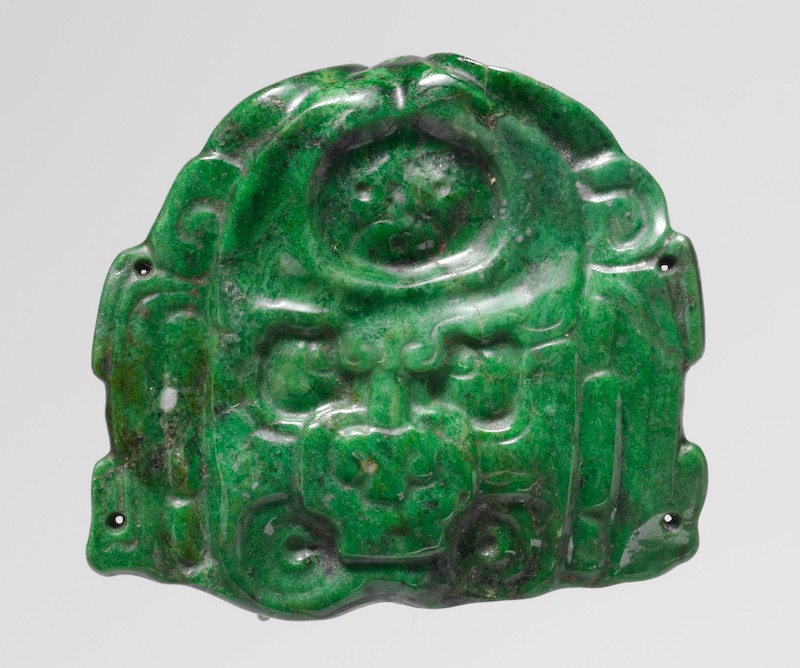Maya Deity-Face Jade Pendant, 7th-8th century

Annotation
This small carved jade ornament, about 2 inches square, was most likely the central ornament on the paper headband of a Maya ruler. Kings received the paper headband during the ritual in which they became king, signifying the moment in which they were “wrapped” into the office of kingship, transitioning from human mortal into divine king. The ornament represents the face of Ux Yop Hu’n (“Three Leaves Paper” or “Three-Leaf-Paper”) a complex supernatural being associated with the beginnings of kingship and the foundations of human rule who personified the paper headband worn by ancient Maya rulers. This supernatural face also serves as a hieroglyph in other examples of Maya writing, standing for Ux Yop Hu’n and for the Principal Bird Deity, a great supernatural bird associated with wealth and rulership in ancient Maya myth. So the symbols and writing carved on this small ornament connected the ruler with mythical precedents and cosmic forces, as did the fact it was made from rare and valuable jade.
The source is part of the teaching module on Maya writing.
Credits
Deity Face Pendant, 7th–8th century, Metropolitan Museum of Art, https://www.metmuseum.org/art/collection/search/319873